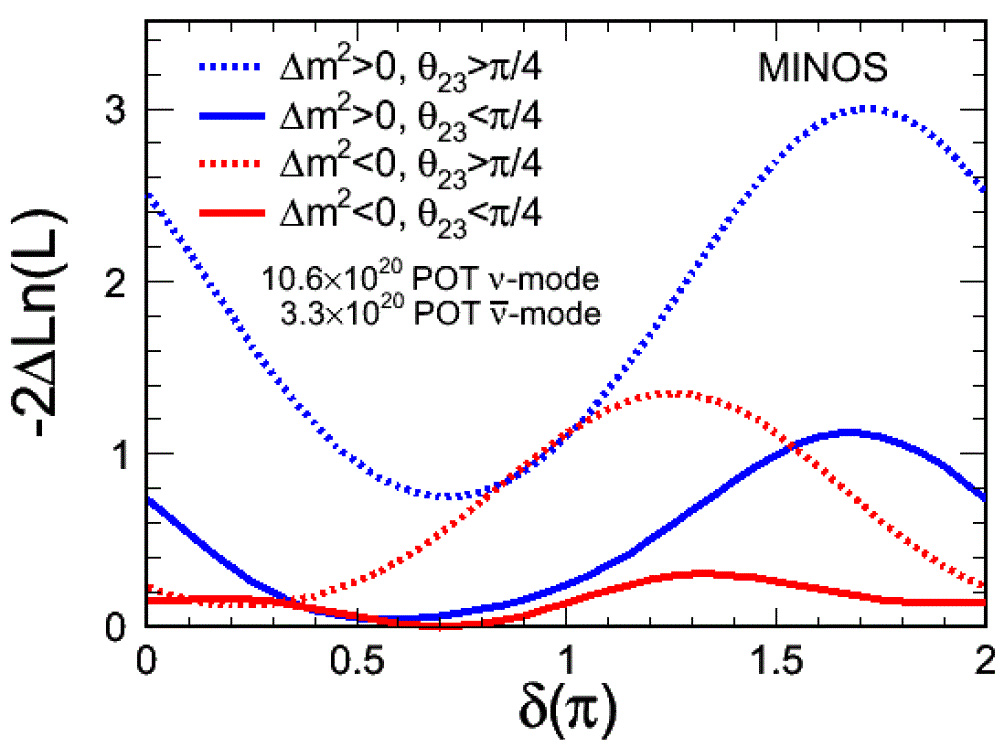“
Over a decade ago the evidence became clear that neutrinos, which come in three varieties, can morph from one type to another as they travel, a phenomenon known as neutrino oscillation. By tallying how often this transformation happens under various conditions—different neutrino energies, different distances of travel—one can tease out a number of fundamental properties of neutrinos, for example, their relative masses. The MINOS collaboration has been doing exactly this by sending an intense beam of muon-type neutrinos from Fermilab to northern Minnesota, where a 5-kiloton detector lies in wait deep underground.
In this new result, MINOS has observed the rare case of muon-type neutrinos changing into electron-type neutrinos. This transformation is governed by a parameter known as θ13, and the MINOS data provide new constraints on θ13 using different experimental techniques than previous measurements. MINOS also collected data with an antineutrino beam, and the real excitement comes in when combining the antineutrino and neutrino data sets. Differences between the rates of this particular oscillation mode between neutrinos and antineutrinos would point to a violation of something called CP symmetry. While physicists know that CP symmetry is violated by quarks, it remains unknown whether the same is true for neutrinos. A new source of CP violation is required to explain why the universe began with more particles than antiparticles, and neutrinos could hold the key. (If the universe began with equal numbers of particles and antiparticles, they would have subsequently annihilated away, leaving nothing left over to make the stars and galaxies we have today.)
|


No comments:
Post a Comment